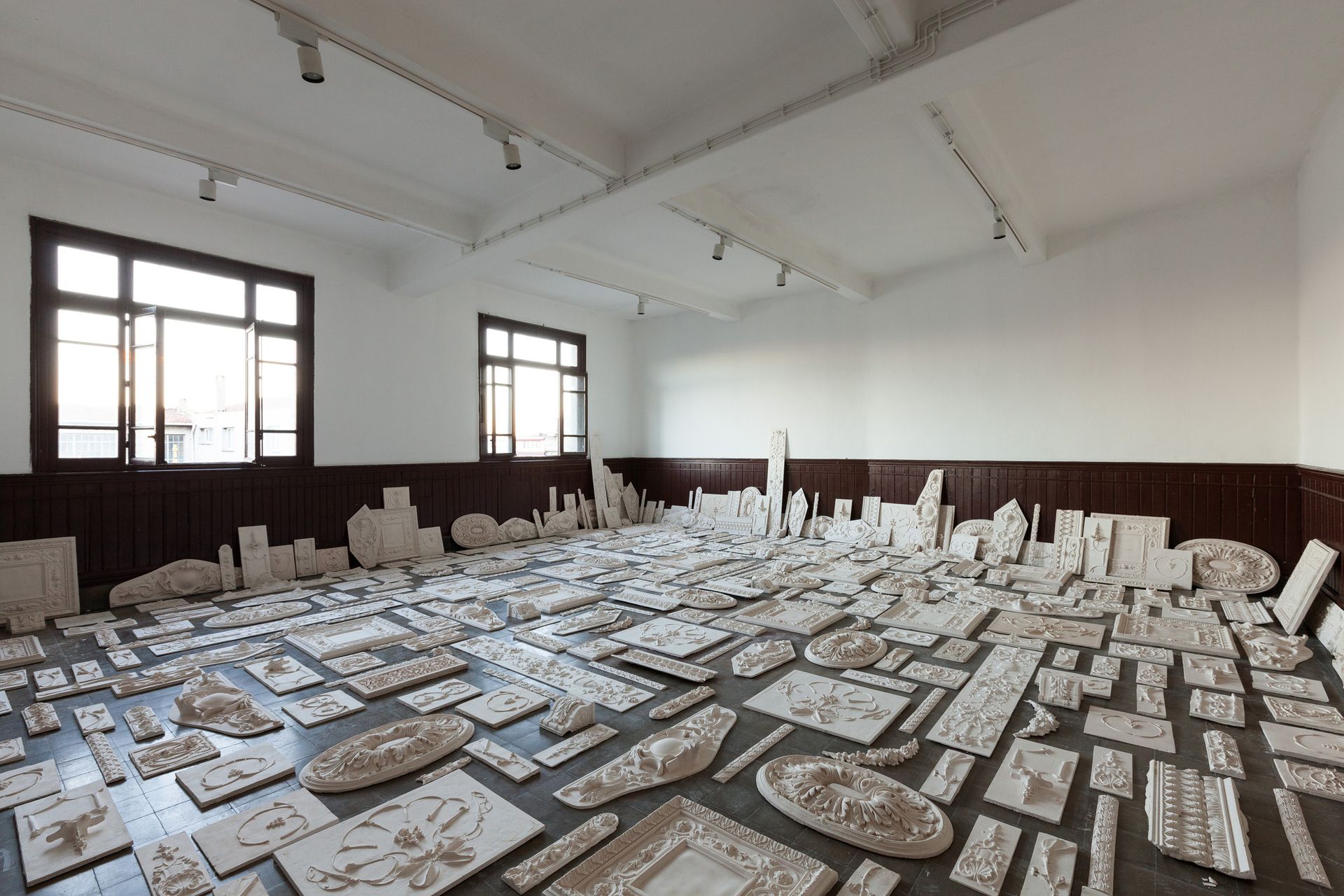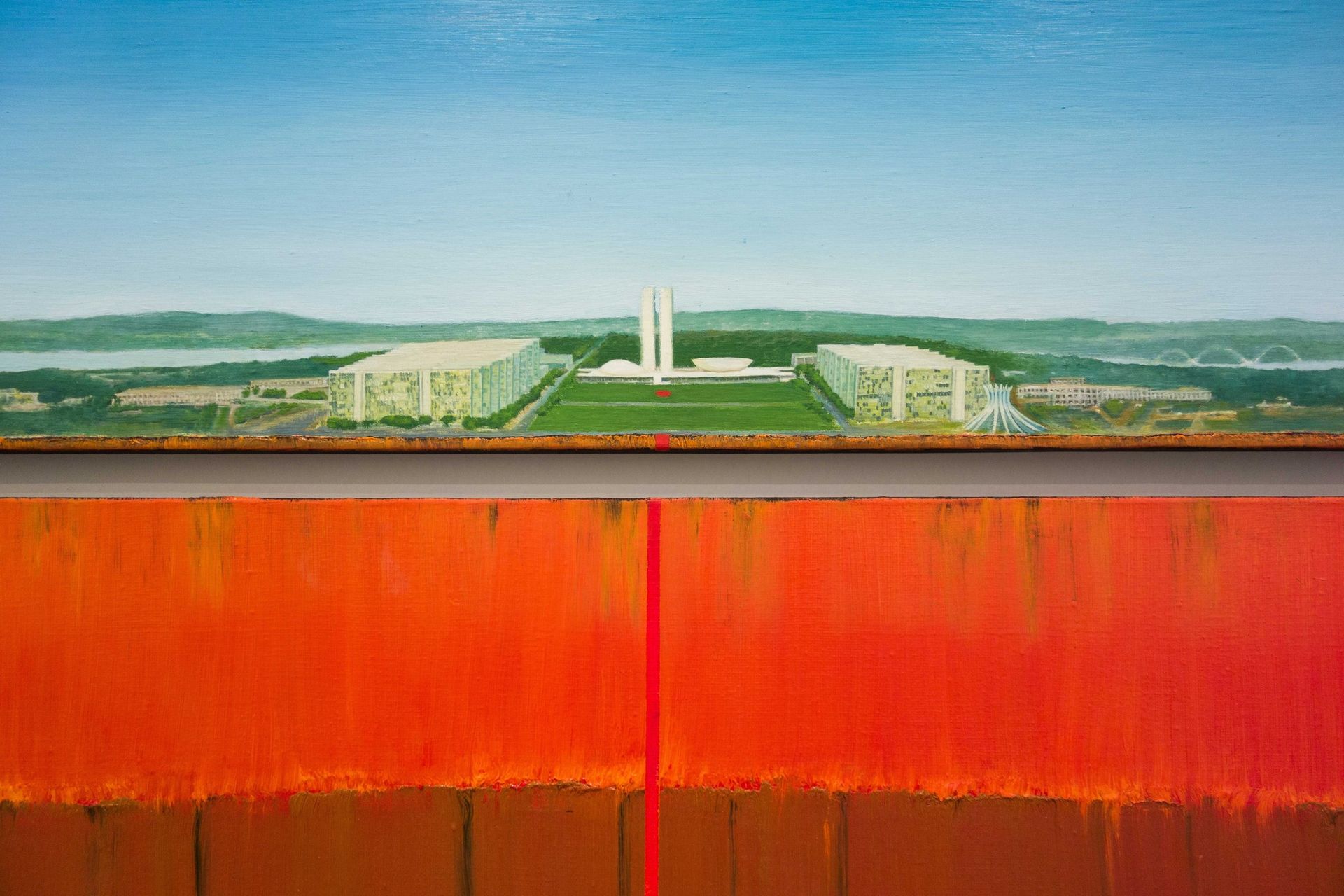Against the backdrop of an escalating Syrian refugee crisis and renewed bloody clashes between the Kurdistan Workers’ Party and the Turkish government, the 14th Istanbul Biennial, Saltwater: a Theory of Thought Forms, opened last week.
The curator Carolyn Christov-Bakargiev responded accordingly, filling her exhibition with works that address conflict, political uprising and ethnic cleansing.
At the press conference for the biennial, Christov-Bakargiev acknowledged calls for artists to briefly suspend their work in support of Turkey’s Kurdish minority, but said that art, rather than politics, has the power to “shape souls” and affect government policies. “Whether the action will have any effect on the Machiavellian deals being done behind closed doors, I’m not sure,” she said, adding: “That’s why I believe in the oak trees.”
The oblique reference, most likely a nod to Joseph Beuys's oak tree-planting work for Documenta (Christov-Bakargiev was, after all, the artistic director of the Kassel exhibition in 2012), perfectly sums up a biennial that is, at best, full of conceptual twists (for example, three of the 36 locations are fictitious), and, at worst, an un-navigable, tangential tangle of knots.
Installed in schools, gardens, the house where Leon Trotsky lived on Büyükada Island in the early 1930s, in the basement of a five-star hotel, in a hamam and even at the bottom of the Marmara Sea, this is not an accessible show. Nor is it possible to see it fully in three days, as a press statement recommends. Not that Christov-Bakargiev cares; she says the biennial is not meant for the art world, but for the people of Istanbul.
Perhaps the most significant message to the city’s inhabitants is the inclusion of 13 artists whose works relate to the Armenian genocide, an atrocity not recognised by the Turkish state. These works, supported by the Dilijan Art Initiative, which sponsored the Golden Lion-winning Armenian pavilion at the Venice Biennale this year, are among the best on show. Several have been commissioned specially for Istanbul.

At the now defunct Galata Greek School—forced to close in 2007 because of a dearth of Greek students—the Lebanese-born artist Haig Aivazian is presenting Wavy Wavy Is the Sea of Bolis, O Mother (2015), a moving performance of a folkloric melody, sung by the Holy Trinity Armenian Church choir. Sadly, the artist says it is being performed only three times throughout the entire biennial. The locals are not likely to catch this one.
Upstairs, where the heat intensifies, the Iraqi-Jewish artist Michael Rakowitz is showing The Flesh Is Yours, The Bones Are Ours (2015). The eye-opening installation consists of plaster friezes moulded from architectural details crafted by Armenians throughout Istanbul. “[The friezes] show the traces of Armenian hands and fingers, which bear silent witness to what happened in the city in 1915 when the Armenians were annihilated and dispossessed,” Rakowitz says.
In a macabre twist, bones have been incorporated into the Chicago-based artist’s work. Rakowitz sourced livestock that are descended from the Armenian farms that were confiscated after the 1915 genocide and used the bones of these animals to make the plaster casts. Nearby, the excavated bones of a dog are organised in piles, a reference to the 80,000 stray animals that were rounded up and sent to the island of Sivriada to die of hunger and thirst in 1911, a grim premonition of the Armenian genocide.
Several other works that refer to Armenian history are dotted around the city. The Belgian-born artist Francis Alÿs is showing an exquisite black-and-white film, Silence of Ani (2015), which depicts children from Eastern Anatolia playing bird songs on whistles in the ruins of the medieval Armenian city of Ani. Towards the end of the film, the songs reach a collective crescendo, calling back the birds to the once bustling city.
Anchoring the biennial is the privately run museum Istanbul Modern, where several artists with connections to Armenia are exhibiting. They include the Lebanese Modernist painter Paul Guiragossian, who was born in Jerusalem to survivors of the Armenian genocide. The 14 paintings by Guiragossian on show provide a mini retrospective of the artist’s output, which oscillates between figuration and abstraction, but is always steeped in mourning.

Here, too, visitors can see the Brazilian artist Cildo Meireles’s 2011 painting, Project hole to throw dishonest politicians in, which, according to an article published in Artnews in May, could be the conceptual starting point for Christov-Bakargiev’s exhibition. (In the article, the curator describes a painting by Meireles as the “platform” from which the “whole biennial emerges”, but she characteristically declines to say which painting. Project hole to throw dishonest politicians in is the only work by Meireles in the exhibition.)
The painting is a tongue-in-cheek solution, a metaphor for how to deal with corrupt statesmen, but ultimately the work—and the biennial as a whole—is futile in the face of so much suffering.
Anny Shaw is a London-based correspondent for The Art Newspaper.
14th Istanbul Biennial: Saltwater: a Theory of Thought Forms, various locations, until 1 November

